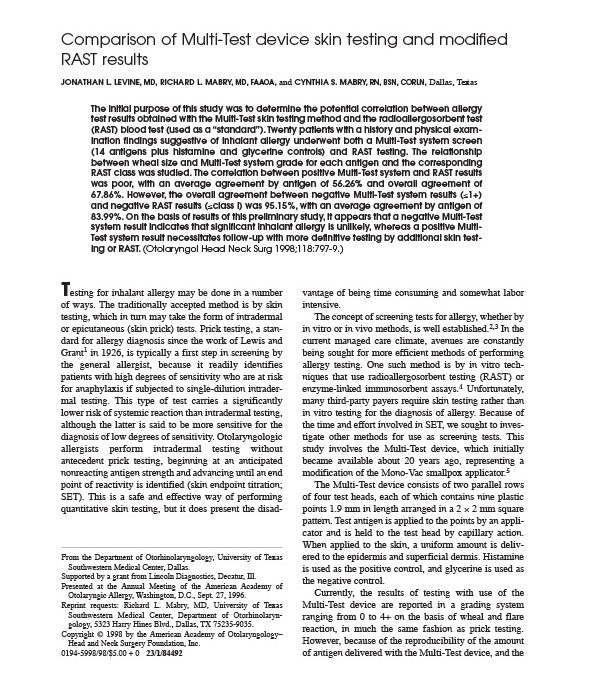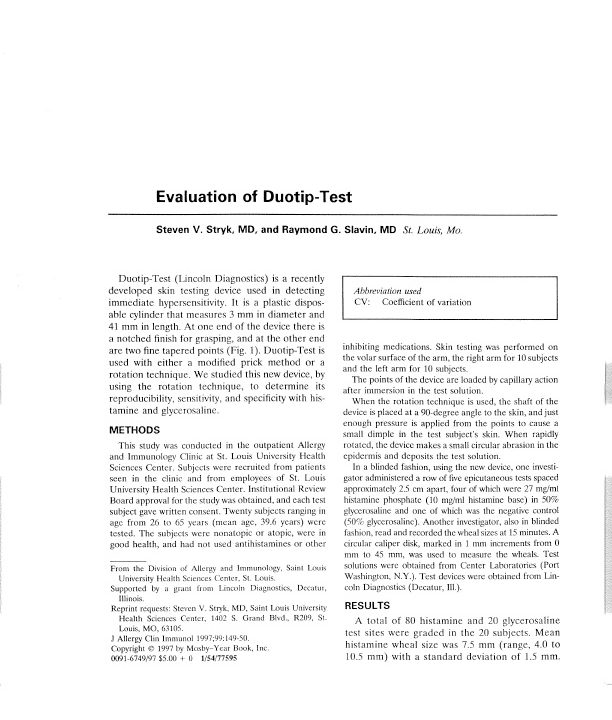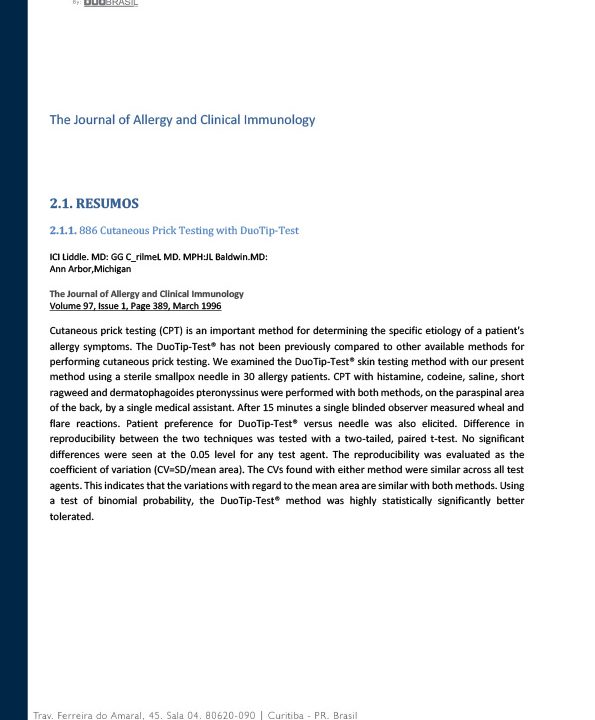Acesse de acordo com o seu Perfil: MÉDICO VETERINÁRIO PACIENTE
COMPARISON OF MULTI-TEST DEVICE SKIN TESTING AND MODIFIED RAST RESULTS
Comparison of Multi-Test device skin testing and modified RAST results
Background: Allergy skin testing guides developing avoidance plans and writing an immunotherapy prescription. The goal for the allergist is to apply allergen skin testing to the appropriate patient population by using a device that minimizes both false-negative and false-positive findings while minimizing patient discomfort. New skin testing devices continue to be developed with a trend toward production of multiheaded devices. Data on the performance of these devices in a head-to-head prospective fashion are limited.
Objective: Our goal was to study 8 commonly used devices to compare their performance in a head-to-head fashion.
Methods: In a prospective, double-blind fashion, the performance of 8 skin test devices was evaluated. Devices were tested with histamine and saline on both the arms and back of each subject. Devices were rotated over 4 testing sessions, at least a week apart, so each device was tested in each anatomic testing location. Performance elements examined included wheal, flare, pain, sensitivity, specificity, and intradevice variability.
Results: We found significant differences in all areas of device performance among all devices examined. Multiheaded devices also demonstrated significant intradevice variability and were more painful than single devices. Furthermore, multiheaded devices had larger reactions on the back, whereas single devices had larger reactions on the arms.
Conclusion: Statistically significant differences exist among all devices tested. Providers should consider this data when choosing a device that suits their practice setting and ensure that technicians are sufficiently trained on the correct use of that device. (J Allergy Clin Immunol 2005;116:341-6.)
Key words: Skin testing, device, performance, variability, pain




